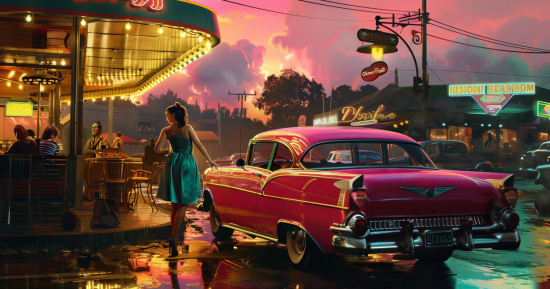Line art is a simple yet powerful art style that uses clear, distinct lines to create images, no shading, no color, just lines. Often created in black and white, line art emphasizes shape, form, and flow, making it perfect for both fine art and commercial design. In this guide, you’ll learn what line art is, how it’s used, and how you can create it yourself using traditional or digital tools.
What Is Line Art?
Line art is a drawing made with lines, straight, curved, thick, or thin, without using shadows or blocks of color. Artists rely on these lines to define objects, textures, and movement. It can be:
- Two-dimensional or three-dimensional
- Simple or detailed
- Abstract or realistic
The beauty of line art lies in its minimalism and ability to communicate form with clarity.
Famous artists like Gustave Doré used line work for engravings and illustrations, and today you’ll find line art in everything from tattoos and comics to modern home décor.
Techniques and Styles in Line Art

Materials and Tools
Traditional Tools
- Pens and Inking Tools: Use fineliners, dip pens, or brush pens for different effects.
- Pencils and Erasers: Great for sketching outlines before inking.
- Paper: Choose smooth, high-quality paper for clean lines.
- Rulers and French Curves: For geometric or architectural line work.
Digital Tools
- Graphic Tablets or iPads with stylus
- Software like Adobe Illustrator, Procreate, or Clip Studio Paint
- Digital brushes that simulate ink or pencil
- Layer tools for precise adjustments
Whether you go traditional or digital, each method has its strengths. Traditional line art offers a tactile, hands-on feel, while digital tools give you flexibility and editing options.
Techniques and Styles in Line Art
- Contour Drawing: Follows the visible edges of a subject without lifting the pen.
- Hatching and Cross-Hatching: Parallel or intersecting lines used to create texture or depth.
- Stippling: Tiny dots instead of lines.
- Continuous Line Drawing: Drawing the whole subject in one unbroken line.
- Geometric Line Art: Uses repeated shapes and patterns.
Experimenting with line weight and direction adds movement and emotion to your work.
Applications of Line Art

Fine Art
It relies on various techniques to emphasize form and create drawings, ranging from constant-width lines in technical illustrations to freely varying widths in brushwork and engraving. The beauty of line art is its ability to either lean towards realism or take a more abstract approach.
When exploring line art in the fine art realm, you are likely to encounter works across various mediums, including:
- Pencil sketches
- Ink drawings
- Charcoal renderings
- Digital line illustrations
Line art allows artists to explore minimalism, gesture, and abstract representation while focusing on the strength of each line.
Commercial Use
Line art has many practical applications in the world of commercial design. Its simplicity and clarity make it an ideal choice for different purposes, such as:
- Logos and Icons: Clean, scalable, and versatile
- Technical Drawings: Blueprints, manuals, schematics
- Advertising: Simple, striking visuals
- Fashion and Textile Design: Patterns and embroidery guides
- Home Decor: Wall art, posters, prints
Its clarity and simplicity make line art a go-to style across industries.
Creating Your Line Art

- Choose Your Subject
- Think simple: a face, hand, plant, or household object.
- Sketch the Basic Shape
- Use pencil first to block out your subject.
- Define with Lines
- Outline the form using clean, confident strokes.
- Add detail with patterns, textures, or repeated marks.
- Refine Your Work
- Adjust line thickness for contrast.
- Add shading with hatching or stippling (optional).
- Digitize (Optional)
- Scan your drawing or trace it in digital software for touch-ups or color accents.
Tips for Line Art Beginners
- Start with basic shapes like circles, squares, or curves
- Practice line control, try drawing slow, steady lines without lifting your pen
- Use varying pressure for dynamic thickness
- Keep your hand relaxed to improve flow
- Work with reference images to build confidence
Over time, you’ll develop your own style and rhythm.
Tips and Best Practices
- Practice: Creating impressive line art takes time and, like any other art form, requires practice. So, don’t get discouraged if your initial attempts aren’t perfect.
- Stay consistent: Consistency is crucial in line art since it relies on just lines. Keep your lines’ thickness, style, and spacing consistent throughout your artwork.
- Experiment with different line techniques: Familiarize yourself with various line techniques like hatching, cross-hatching, and stippling to add texture and depth to your creations.
- Try abstract or stylized subjects: Line art allows for a wide range of creative freedom, so don’t be afraid to experiment with abstract shapes or stylized subjects.
- Embrace your unique style: Line art is a personal expression, and there is no “right way” to create it. Develop your signature style by trying new techniques and tools that resonate with you and your artistic vision.
By following the above steps and keeping these tips in mind, you’ll be well on your way to creating stunning line art that showcases your unique artistic talents.
FAQ – Line Art
What is line art?
Line art is a drawing style that uses lines, without shading or color, to depict shape and structure.
What materials do I need?
You can use pens, pencils, brushes, or digital tools like tablets and design software.
Can I do line art without being good at drawing?
Yes! Start with simple subjects and practice your line confidence.
Ready to bring your ideas to life with just lines? Whether on paper or screen, start practicing today and let your creativity flow, one stroke at a time. Tag us with your creations or share your journey in the comments!






